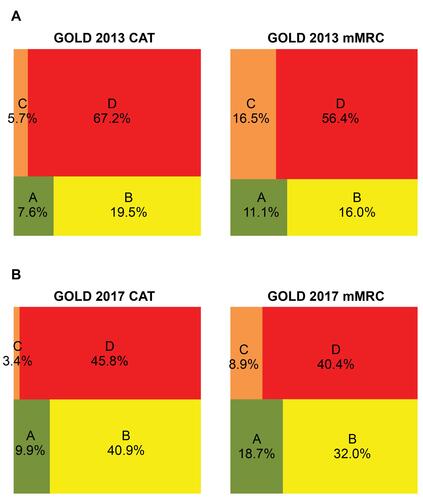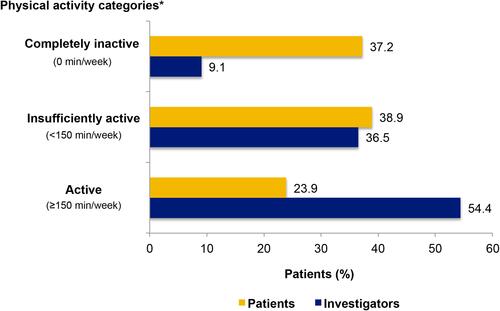Figures & data

Table 1 Socio-Demographic and Clinical Characteristics of Patients
Figure 1 Distribution of patients in ABCD groups using the 2013 (A) and 2017 (B) GOLD edition.

Figure 2 Prevalence of individual respiratory symptoms assessed by questionnaires corresponding for each part of the 24-h day EMSCI, NiSCI and E-RS™:COPD.

Figure 3 The physical activity level assessed by Investigators (clinical judgment) and self-assessed by patients (EVS questions).

Table 2 Physical Activity Results – YPAS Dimensions
Table 3 Relationship Between 24-h Respiratory Symptoms Severity Score and Patients’ Outcomes
Table 4 Relationship Between Physical Activity and Patients’ Outcomes
